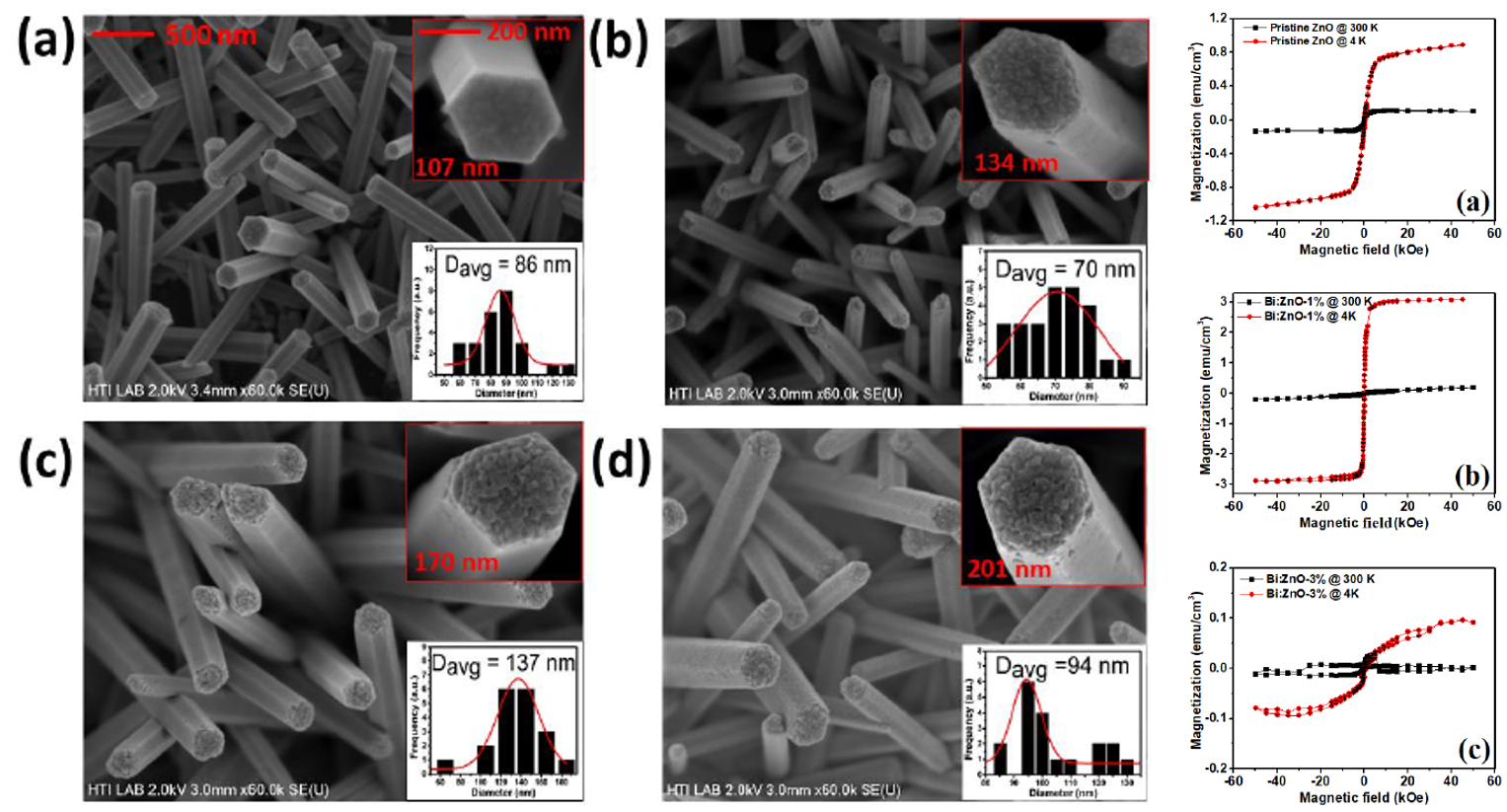Latest Research
This page highlights the latest findings published by IMEN researchers in Q1 and Top 10% journals:
May 2020:
Title: Bi-doping improved magnetic properties of Zinc Oxide nanowires
Journal: RSC Advances (Q1)
Author: Jamal Kazmi, Poh Choon Ooi, Goh Boon Tong, Min Kai Lee, M. F. Mohd. Razip Wee, Siti Shafura A Karim, Syed Raza Ali Razad and Mohd Ambri Mohamed*
Contact details for further info: ambri@ukm.edu.my
Summary:
 FESEM analysis of the top-down view of (a) undoped ZnO NWs, (b) Bi:ZnO-1% NWs, (c) Bi:ZnO-3% NWs, and (d) Bi:ZnO-5% NWs. The top and bottom insets in Figs. 1(a), (b), (c), and (d), respectively show the high-resolution image for a single nanowire and the average diameter measurements for the respective prepared samples.
FESEM analysis of the top-down view of (a) undoped ZnO NWs, (b) Bi:ZnO-1% NWs, (c) Bi:ZnO-3% NWs, and (d) Bi:ZnO-5% NWs. The top and bottom insets in Figs. 1(a), (b), (c), and (d), respectively show the high-resolution image for a single nanowire and the average diameter measurements for the respective prepared samples.
SQUID plots at 300 K (close squares) and 4 K (closed circles) for (a) pristine ZnO, (b) Bi: ZnO-1%, and (c) Bi: ZnO-3% NWs.
Room-temperature ferromagnetism in the large and direct bandgap diluted magnetic semiconductor zinc oxide (ZnO) is attributed to the intrinsic defects and p-orbital–p-orbital (p–p) coupling interaction. However, due to oxidation, the ferromagnetism induced by defects is unstable. In the present work, the solution process synthesis route was utilized to grow pristine and bismuth-doped, highly crystalline ZnO nanowire (ZnO NW)-based samples. The FE-SEM images showed that the grown ZnO NWs have a preferred orientation along the c-axis in the (001) direction due to the anisotropic crystal nature of ZnO. X-ray photoelectron spectroscopy (XPS) confirmed the presence of Bi, and at a higher doping content, the bismuth oxide phase appeared. The XRD patterns showed the wurtzite crystal structure, and the large intensity of the (002) peak suggests that most of the reflection was from the top hexagonal face of the NWs, and thus, the wires are predominantly aligned along the c-axis. The TEM analysis further confirmed the crystal growth direction along the (001) direction. The UV-Visible absorption and PL measurements also showed a decrease in the bandgap with an increase in doping concentration, which may be associated with the sp–d exchange interaction between the localized d-electrons and band electrons of the Bi ions. Bi-doping tended to increase the PL intensity in the visible region. The magnetic properties measured by SQUID at 4 and 300 K showed ferromagnetic behaviour for both the pristine and Bi-doped samples. However, the saturation magnetization for the Bi-doped samples was higher compared to that of the pristine ZnO samples until the threshold doping value. The obtained results demonstrated that Bi-doping can be used to tune both the optical and magnetic properties of ZnO NWs, hence paving the way for future spintronics and spin-polarized optoelectronics applications.

